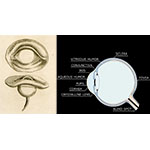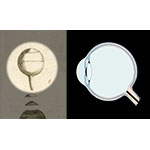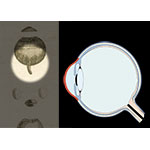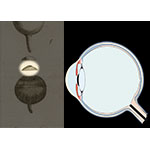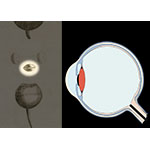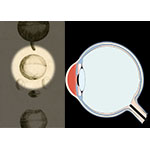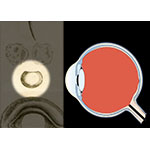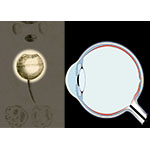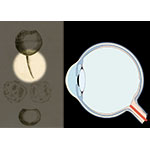The eye is the organ of vision. It receives external luminous stimuli, forms the image on the receptors, and transmits the information to the nervous centers that generate visual perception. The eye comprises the following parts:
The eye as a whole, but without the parts connected to it, such as oculomotor muscles, eyelids, and the optic nerve.
The transparent portion of membrane that defines the anterior chamber of the eye. It allows light to enter the eye, and is the main element involved in focusing light during the image-formation process.
A muscular pigmented membrane that defines a variable aperture ("pupillary aperture") for the passage of light. In bright light, the iris tends to close, down to a diameter of about 2 mm; at lower light levels, it opens to about 8 mm.
The transparent body of the eye, located behind the pupil. Functions as a biconvex lens that focuses the incoming rays of light on the retina. This focusing process is called "accommodation."
Transparent liquid filling the anterior chamber of the eye, between the cornea and the crystalline lens.
Transparent, semifluid mass occupying the part of the eyeball cavity between the crystalline lens and the retina.
Membrane at the back of the eye carrying two types of photoreceptors: cones, sensitive to color, and rods, active in low-light conditions. The cones are more concentrated in the yellow spot or macula lutea. At the center of the macula is a small, rod-free depression: the fovea. The fovea is the point of sharpest vision.








